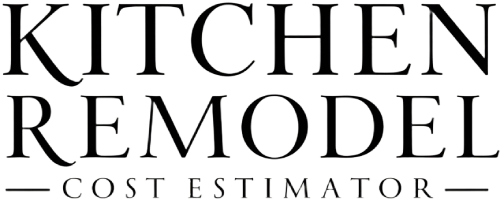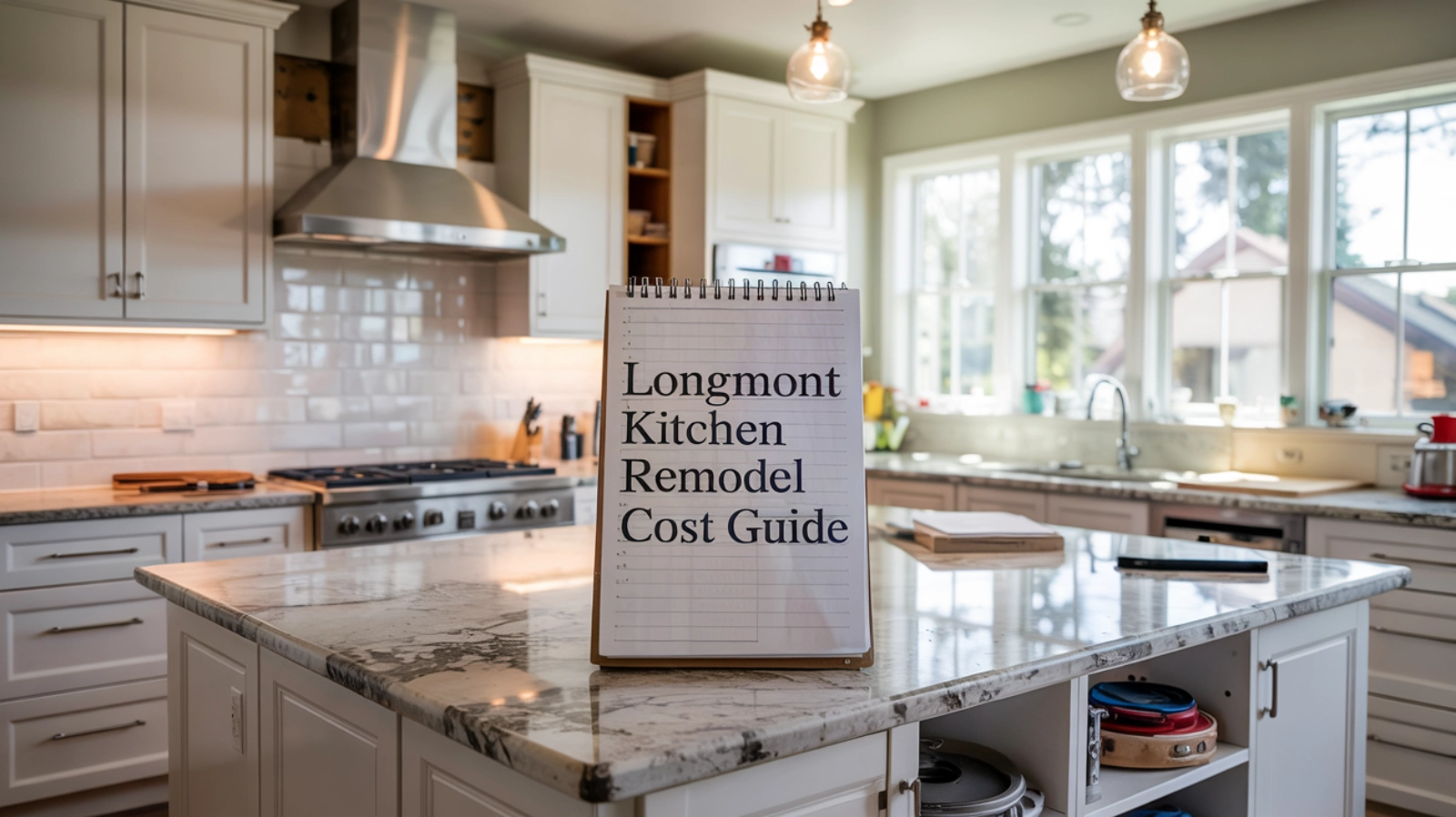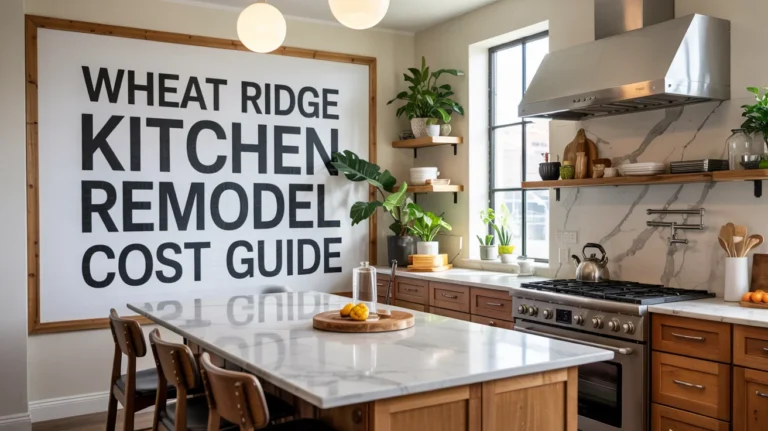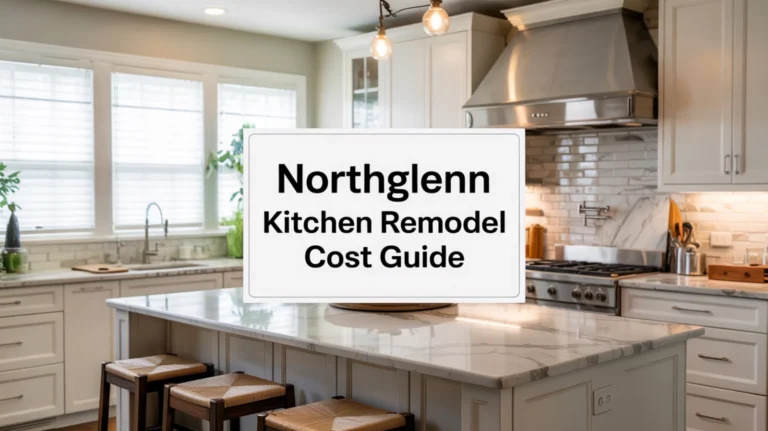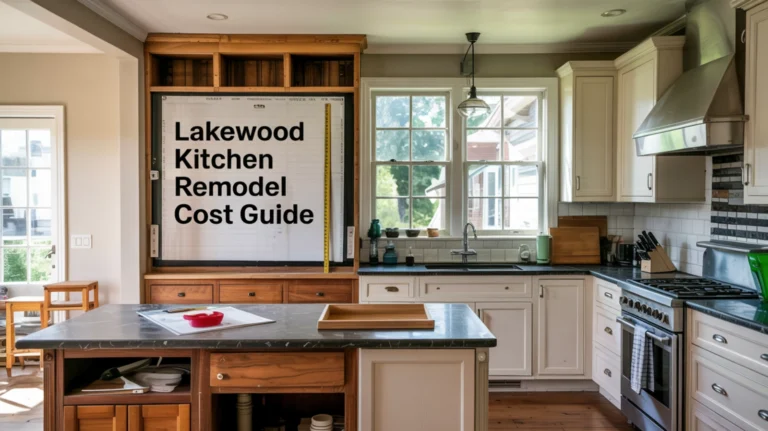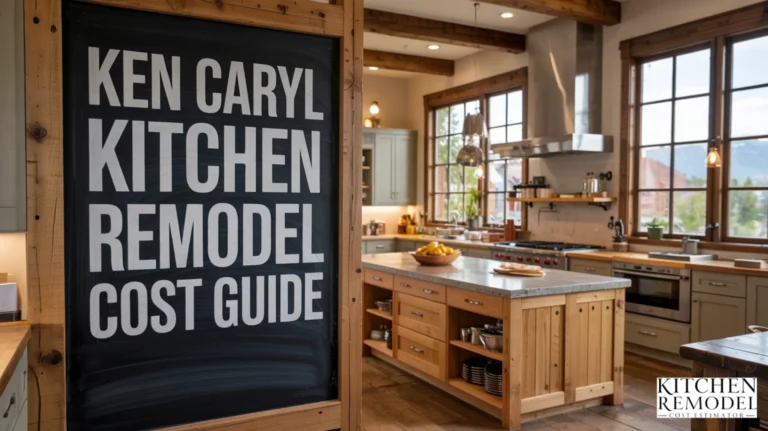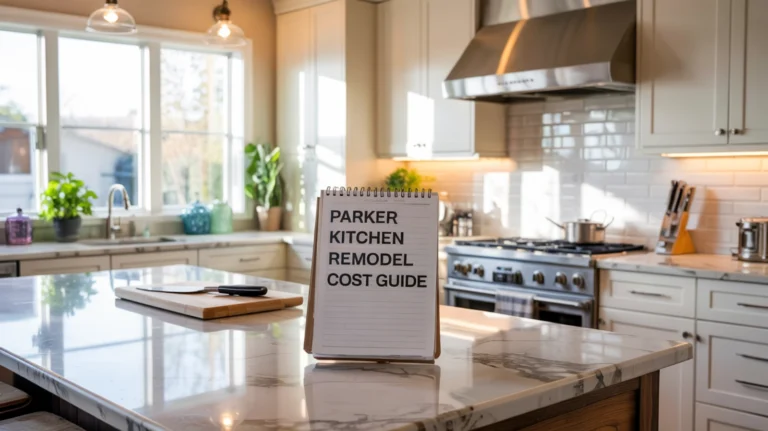Kitchen remodels in Longmont exist in their own microclimate – pricier than Denver but without Boulder’s premium sticker shock. The sweet spot for most local homeowners isn’t about gutting everything down to the studs but making strategic choices that balance immediate impact with lasting value.
So what Longmont kitchen actually cost?
The average kitchen remodel cost in Longmont, Colorado ranges from $16,000 to $42,000. Entry-level remodels with standard appliances and finishes cost around $16,000. Premium remodels with luxury materials and custom layouts can exceed $42,000.
Kitchen Remodel Cost Estimator for Longmont
Longmont Kitchen Remodel Cost Calculator
Get an estimate for your kitchen renovation based on your specifications.
Estimated Kitchen Remodel Cost
This estimate is based on national averages and may vary based on your location, material availability, contractor rates, and other factors. Prices are estimates only and should be used for planning purposes.
Looking for more accurate costs in your area? Search for location-specific remodel costs.
Typical Project Cost Ranges

Wondering what you’ll actually spend on a kitchen remodel in Longmont? Let’s break it down into what matters: the scope of your project and how Longmont’s location affects your bottom line.
Minor Remodel Costs
A minor kitchen remodel is all about refreshing without rebuilding. Think new cabinet fronts instead of full replacements, updated countertops with a matching sink, energy-efficient appliances, fresh flooring, and a coat of paint to tie it all together.
National numbers show these projects have been climbing steadily – from about $22,500 in 2019 to around $27,492 today. Other estimates put the range between $10,000 and $15,000, with some sources suggesting as little as $1,000 if you’re handling most of the work yourself.
But what about Longmont specifically?
Located between Denver and Boulder, Longmont sits in an interesting price position. Denver’s basic kitchen refreshes run between $7,000 and $10,000, but Longmont tends to command higher prices than Denver while staying below Boulder’s premium rates.
For a professionally executed minor kitchen remodel in Longmont, you’re likely looking at $15,000 to $30,000.
While general renovations in the Denver area run about $15-$60 per square foot, kitchen-specific costs for minor updates aren’t broken out as clearly. They’re certainly lower than major renovations, but still represent a significant investment in your home’s value.
Major Midrange Remodel Costs
Ready to take your kitchen to the next level? Major midrange remodels substantially transform your space without going fully custom.
These projects typically include new semi-custom cabinetry, potentially adding a modest island (around 3×5 feet), new countertops, standard-grade appliances with a garbage disposal, custom lighting solutions, new flooring, and often minor layout adjustments.
Nationally, these projects have jumped from around $66,000 in 2019 to approximately $79,982 in recent reports. Most sources place these projects between $25,000 and $60,000 across the country.
Denver estimates show surprising variance – some sources place mid-range projects between $11,000 and $25,000, while others suggest $100,000 to $150,000. Why such a gap? Different definitions of what constitutes “mid-range.”
A real Longmont example featuring high-quality white oak cabinets came in between $45,000 and $70,000.
When we synthesize all these figures, a major midrange kitchen remodel in Longmont most likely falls between $40,000 and $85,000. On a square footage basis, expect to pay between $200-$425 per square foot based on Denver-area estimates.
Major Upscale Remodel Costs
Looking for the kitchen of your dreams with all the bells and whistles? Upscale remodels represent the high end of renovation possibilities.
These kitchens feature fully custom cabinetry with premium additions like built-in organizers, high-end stone countertops (think marble or quartzite), commercial-grade appliances, designer plumbing fixtures with water filtration, significant layout changes (potentially involving removing walls), premium flooring like hardwood or large-format tile, and sophisticated lighting designs.
What does all this luxury cost? Nationally, upscale remodels range from $48,000-$90,000+ for designer kitchens up to $158,530 according to recent data. Some estimates go as high as $300,000 for truly extensive, luxury renovations.
In Denver, high-end estimates range from $38,000-$150,000+ or $150,000-$300,000+, depending on the source. Boulder takes it even higher, with costs between $150,000 and $300,000.
This geographic difference matters tremendously for your budget. Longmont sits between these markets, with costs typically higher than Denver but lower than Boulder.
For an upscale kitchen remodel in Longmont, expect to start around $85,000 and potentially exceed $150,000 depending on your material choices, customization level, and whether structural changes are involved. Square footage costs align with the upper end of Denver ranges: $190-$375 per square foot.
One important note: the definitions of “minor,” “major,” and “upscale” aren’t standardized across different sources. One report’s “major” remodel might match another’s “mid-range” definition.
The price jump between tiers isn’t linear, either. Moving from mid-range to upscale doesn’t just mean better materials – it means increased customization, complex layout changes requiring plumbing and electrical relocations, and potential structural modifications.
This explains the significant cost leap – you’re paying for increased complexity, specialized labor, detailed design work, and bespoke elements. High-end remodels require more extensive labor, design time, and larger contingency funds to account for unexpected issues.
Summary of Estimated Longmont Kitchen Remodel Cost Ranges
| Remodel Tier | Estimated Total Cost Range (Longmont Synthesis) | Estimated Cost Per Sq. Ft. Range (Based on 200 sq ft Kitchen) |
|---|---|---|
| Minor Midrange | $15,000 – $30,000 | $75 – $150 |
| Major Midrange | $40,000 – $85,000 | $200 – $425 |
| Major Upscale | $85,000 – $150,000+ | $425 – $750+ |
Note: Ranges are synthesized estimates for Longmont based on available national, Denver, and Boulder data, subject to specific project scope, material choices, and contractor pricing.
Return on Investment (ROI) Analysis
Before you start tearing out cabinets, you probably want to know what kind of return you’ll see on all that money you’re about to spend. After all, a kitchen remodel is as much an investment as it is an improvement to your daily life.
%%{init: {'theme': 'neutral'}}%%
graph TD
A[Kitchen Remodel] --> B{Market Conditions};
A --> C{Project Quality};
A --> D{Specific Features};
A --> E{Alignment with Standards};
B -- "Impact ROI" --> F[Home Resale Value];
C -- "Impact ROI" --> F;
D -- "Impact ROI" --> F;
E -- "Impact ROI" --> F;
style A fill:#f9f,stroke:#333,stroke-width:2px
style B fill:#ccf,stroke:#333,stroke-width:1.5px
style C fill:#ffcc99,stroke:#333,stroke-width:1.5px
style D fill:#ccffcc,stroke:#333,stroke-width:1.5px
style E fill:#e6e6ff,stroke:#333,stroke-width:1.5px
style F fill:#FFFFE0,stroke:#333,stroke-width:1.5pxReported ROI for Minor Kitchen Remodels
Minor kitchen remodels—those refreshes that update aesthetics and key components without changing your layout—have historically offered some of the strongest returns in the Boulder County area.
Regional data shows homeowners in Boulder could expect to recoup between 54% and 71% of their kitchen remodel costs when selling their home. That’s a significant portion of your investment coming back to you at sale time.
Some analyses suggest minor updates historically offered higher percentage returns compared to major overhauls. It makes sense—you’re addressing the visuals and functionality that buyers notice without the hefty price tag of structural work.
The gold standard for ROI benchmarks is the annual Remodeling Magazine Cost vs. Value report. While national ROI figures have fluctuated over time, 2024 saw a general increase in value recouped for common projects nationally (though specific project types vary).
Reported ROI for Major Kitchen Remodels
What about when you go bigger with your renovation?
Major kitchen remodels—with new cabinetry, layout adjustments, and potentially adding an island—also yield considerable returns in our region. That same 54% to 71% range for Boulder provides a general expectation.
Specific data for the Denver area indicates an ROI of approximately 51% for major midrange remodels that include layout changes and an island. That’s slightly above the national average at the time of reporting.
Here’s something to keep in mind: even as material and labor costs rise (putting downward pressure on ROI percentages), the absolute dollar value added to your home may still increase.
There’s another return that doesn’t show up in these percentages: marketability. Homes with renovated kitchens typically sell more quickly than those needing updates. In a shifting market, that speed advantage can be just as valuable as the direct financial return.
Interpreting ROI numbers requires some nuance. These percentages represent averages and can shift with market conditions, project execution quality, and specific features incorporated. The standard Cost vs. Value methodology uses standardized project definitions, so your actual return depends on how closely your remodel matches these standardized scopes.
The source of ROI data matters tremendously. The Remodeling Magazine Cost vs. Value report is consistently referenced as the authoritative benchmark by local industry experts. For the most accurate and geographically relevant figures for Longmont, you’ll want to access the specific Denver or Mountain region data from the current report year.
Kitchen Remodel ROI Data (Denver/Mountain Region Estimates)
| Remodel Tier | Reported ROI Percentage Range (Denver/Mountain Region) | Data Source/Context |
|---|---|---|
| Minor Midrange Kitchen Remodel | Varies; Historically strong, check current report | Remodeling Magazine Cost vs. Value Report (Annual) |
| Major Midrange Kitchen Remodel | ~51% – 71% | Based on cited sources; check current report for updates |
| Major Upscale Kitchen Remodel | Varies; Often lower % than Midrange, check report | Remodeling Magazine Cost vs. Value Report (Annual) |
Note: ROI figures are estimates based on regional data (primarily Denver/Boulder area) from sources referencing the Cost vs. Value report. Actual ROI depends on specific project details, market conditions at time of sale, and alignment with report definitions. Consult the latest Cost vs. Value report for specific figures.
Cost Component Breakdown
Ever wondered where all that money actually goes in a kitchen remodel? Understanding how your budget gets distributed across different elements helps you make smarter decisions about where to splurge and where to save.
Allocation of Remodel Budget
Let’s break down where your dollars typically end up in a Longmont kitchen renovation:
Labor Costs
Labor consistently represents one of the largest slices of your budget pie. Estimates for its share vary remarkably – ranging from 17% to between 20% and 35%, and even as high as 45% in analyses that include design fees with labor.
Why such a wide range? Project complexity plays a huge role. Renovations involving significant layout changes or structural work demand more hours from various trades compared to simple cosmetic updates.
The variation also reflects differences in how costs get categorized. Some estimates include design fees in “labor,” while others separate them.
What’s included in labor? Everything from demolition to cabinet installation, countertop work, flooring installation, appliance setup, plus specialized work by plumbers, electricians, tilers, and painters. Given this variability, getting detailed labor quotes broken down by trade is essential for accurate budgeting.
Cabinetry Costs
Cabinetry frequently commands the largest material expense in your kitchen remodel. Budget allocation estimates place it at 22-29% of your total project cost.

What drives cabinet costs? The type you select (stock, semi-custom, or fully custom) and your chosen materials and finishes. A real Longmont example mentions quality white oak cabinets contributing to a $45,000-$70,000 total project cost.
Total cabinet expenses range widely – from $10,000-$12,000 on the lower end up to $25,000-$75,000 for premium options, with another specific case hitting $45,000. Looking to save? Painting existing cabinets instead of replacing them costs between $2,000 and $7,000.
Countertop Costs
Countertops typically account for approximately 7-10% of your total remodel budget. The primary cost driver? Your chosen material.

Average total costs run around $3,000-$4,200, but premium materials like quartz ($6,000-$10,000+ total project cost) or quartzite significantly increase this figure.
Appliance Costs
Appliances generally make up about 11-14% of your budget. The range here is extensive – from basic replacement packages ($1,000-$10,000) to high-end or commercial-grade selections ($10,000-$15,000, potentially up to $50,000, or $25,000+ for luxury remodels).

Energy efficiency has become an increasingly important selection factor beyond just aesthetics and features.
Flooring Costs
Flooring expenses typically represent 5-7% of your overall budget. Material choices such as Luxury Vinyl Plank (LVP), tile, natural stone, or hardwood directly influence the cost.

For moderate to major remodels, total flooring expenditures often fall between $5,000 and $10,000.
Plumbing System Costs
This category includes fixtures like sinks and faucets, plus the labor for installation and any necessary pipe modifications. Budget allocations typically run around 4-6%.
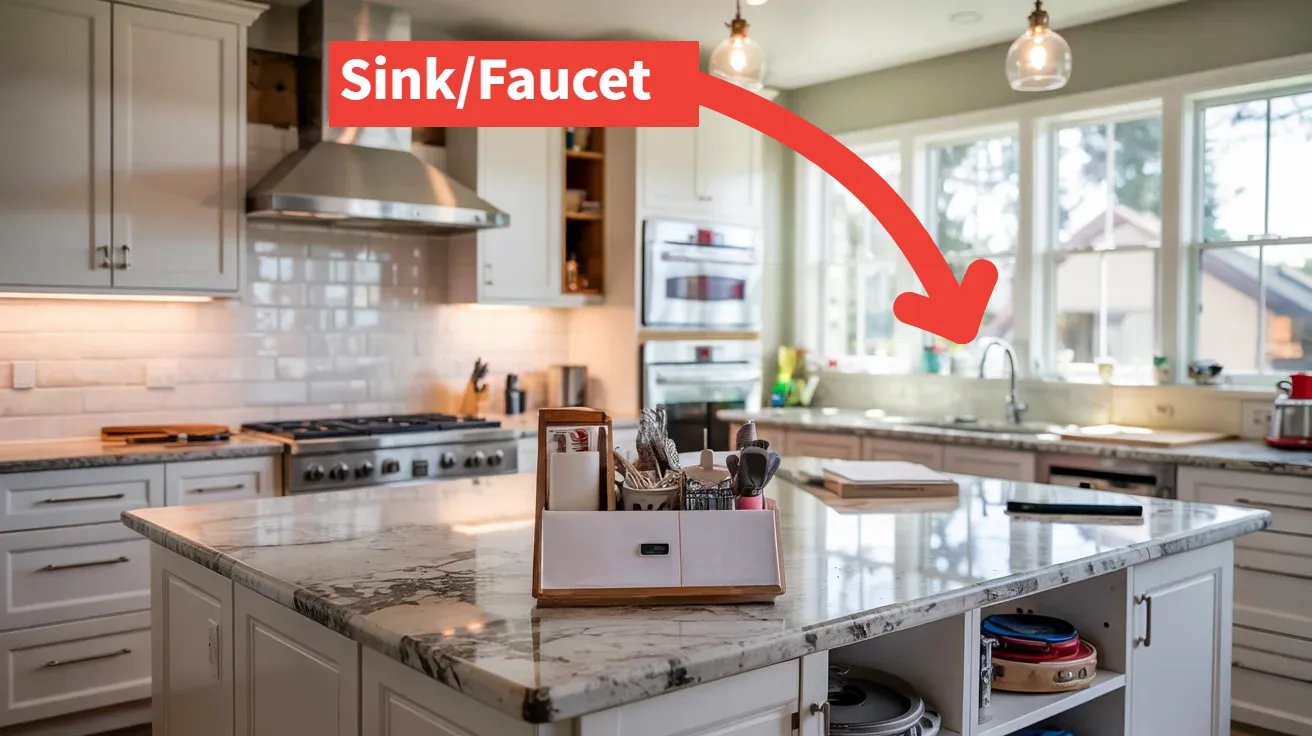
Total costs can range dramatically – from $2,000 to $20,000 – depending heavily on the scope. Simply swapping fixtures is far less expensive than relocating plumbing lines. The cost of sinks and faucets alone varies widely based on quality and features.
Electrical System Costs
Electrical work covers lighting fixtures, wiring updates, potential electrical panel upgrades, and labor. It typically accounts for approximately 5% of your budget.
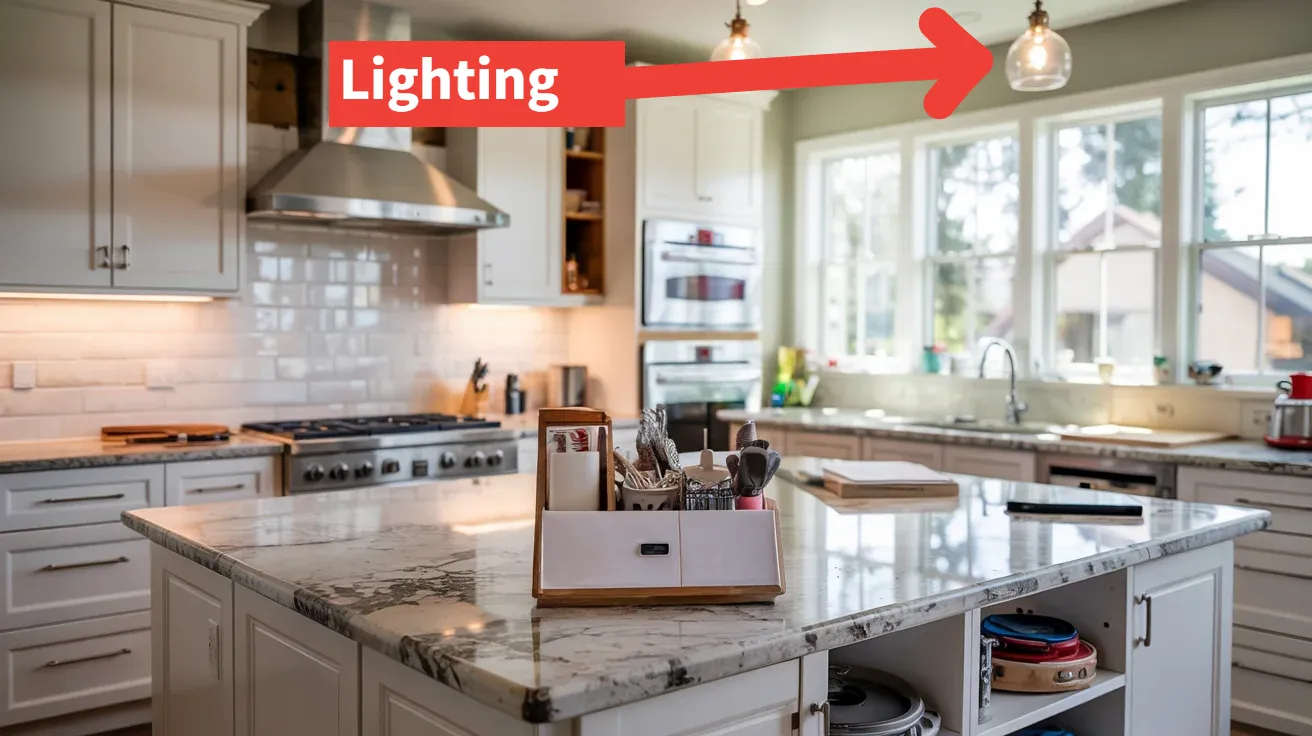
Similar to plumbing, costs vary based on complexity, ranging from $2,000 to $20,000 depending on whether new circuits, undercabinet lighting, or significant rewiring is required.
The cost of lighting fixtures themselves spans a vast spectrum – from basic units ($50) to elaborate designer systems ($20,000).
Permitting Fees
While permits represent a relatively small percentage of your total budget (often included within a ‘Miscellaneous’ category estimated around 5%), they’re a mandatory expense.
Fee structures typically reflect the project’s valuation. Longmont determines specific fees upon permit application based on the declared construction valuation, with additional charges for services like reinspections potentially applying.
Here’s something crucial to understand: these cost components aren’t independent of each other. Decisions in one category frequently trigger changes in others.
Selecting high-end custom cabinets typically leads to choosing complementary premium countertops and upscale appliances to maintain design consistency. This cascading effect escalates costs across multiple budget lines simultaneously.
Similarly, changing your layout by moving sinks or appliances affects cabinetry, countertop fabrication, plumbing labor, electrical work, flooring repairs, and potentially even structural modifications.
Effective budgeting requires this holistic perspective rather than viewing each cost category in isolation.
Average Cost Breakdown Percentages for Kitchen Remodels (Regional Synthesis)
| Cost Component | Average Budget Allocation (Percentage Range) | Notes |
|---|---|---|
| Labor (Installation, Trades) | 17% – 45% | Higher end may include design fees; highly variable with complexity |
| Cabinets | 22% – 29% | Often the largest single material expense |
| Appliances & Ventilation | 11% – 14% | Wide range based on quality/brand |
| Countertops | 7% – 10% | Highly dependent on material choice |
| Flooring | 5% – 7% | Material type is key cost driver |
| Plumbing (Fixtures & Labor) | 4% – 6% | Increases significantly if lines are moved |
| Lighting & Electrical (Fixtures & Labor) | ~5% | Increases with custom lighting, new circuits |
| Permits, Backsplash, Paint, Misc. | ~5% – 10% | Includes smaller items, contingency, permit fees |
Note: Percentages are synthesized ranges based on regional data and can vary significantly based on project specifics, material quality, and labor rates.
Material Cost Detail
Within these budget allocations, specific material selections drive much of the cost variation:
Countertop Materials
The cost per square foot varies substantially:
- Laminate: $20-$60
- Butcher Block: $40-$100
- Granite: $40-$100
- Quartz: $50-$120
- Marble: $70-$150+
- Concrete: $70-$140
- Soapstone: $70-$120
- Quartzite: $80-$200
Quartzite can easily cost double that of quartz. Factors like selecting rare slabs, custom edge profiles, or thicker profiles further increase costs. Total project costs for quartz typically range from $6,000-$10,000.
Flooring Materials
Per-square-foot costs for common options:
- Luxury Vinyl Plank (LVP): $2-$5
- Tile: $3-$10
- Stone: $3-$12
- Hardwood: $4-$10
The overall flooring budget for a moderate or major remodel typically falls between $5,000 and $10,000.
Backsplash Materials
Costs per square foot:
- Ceramic Tile: $5-$15
- Glass Tile: $10-$30
- Marble Tile: $15-$50
- Zellige Tile: $20-$50
- Slab Stone (matching countertop material): $40-$100+
Custom patterns or intricate layouts increase installation labor and overall cost. The backsplash typically represents around 5% of your total budget.
Cabinetry Material/Finish Considerations
Cabinet costs depend heavily on construction type and material. Options range from budget-friendly stock cabinets to mid-range semi-custom and premium full custom cabinets.
Material choices like solid wood (White Oak is noted as a quality option in Longmont) versus engineered wood affect price and durability.
Total cabinet costs vary widely – from $10,000-$12,000 up to $25,000-$75,000, with one example hitting $45,000.
Individual cabinet unit costs also differ:
- Utility cabinets: $500-$3,000
- Corner cabinets: $180-$1,000
- Base cabinets: $100-$500
- Wall cabinets: $100-$300
Regulatory and Standards Compliance
Dreaming about your new kitchen is the fun part. Dealing with permits and building codes? Not so much. But understanding these requirements is crucial for a successful, legal renovation in Longmont.
City of Longmont Permitting Requirements
Navigating Longmont’s permitting process isn’t optional – it’s a mandatory step for ensuring legal compliance and safety in your remodel.
Permit Triggers for Kitchen Remodels
The City of Longmont requires a building permit for any project involving alteration, repair, or demolition within an existing structure. For kitchens, this typically includes modifications to:
- Plumbing systems
- Electrical wiring
- Mechanical systems (HVAC)
- Structural components (removing/altering walls)
Are you planning purely cosmetic updates like painting cabinets or replacing countertops without touching plumbing or electrical? You might not need a permit – but it’s always worth verifying with the Building Inspection Division for your specific project.
Interestingly, Longmont homeowners can act as their own general contractor for interior remodeling projects, including kitchens, provided the property is their primary residence and not intended for rental or immediate resale.
But there’s a catch – even when acting as GC, you must hire Longmont-licensed subcontractors for any HVAC, electrical wiring, plumbing, or framing work. Projects involving room additions with new foundations require a licensed general contractor to obtain the permit.
Application Process and Documentation
Ready to submit your permit? Here’s what you need to know:
Permit applications go to the City of Longmont Building Inspection Division, located at the Development Services Center, 385 Kimbark St. You can submit in person or electronically via email to [email protected].
The city prefers electronic submissions using PDF file attachments or USB drives. A complete application package typically includes:
- A fully filled-out Building Permit Application form
- The estimated construction valuation cost (which determines your permit fees)
- Detailed project plans
These plans must clearly illustrate the nature and extent of your proposed work, potentially drawn to scale, showing the existing and proposed layout, dimensions, and affected systems.
For physical submissions of plans larger than 11×17 inches, non-structural interior remodels may require two copies; projects adding finished square footage or involving structural changes may need three physical copies if not submitted electronically.
Planning to remove or modify load-bearing walls? You’ll need structural plans and potentially engineering calculations.
Not familiar with code requirements? Consider getting professional help with plan preparation to avoid delays caused by revisions.
Relevant Municipal Department: Building Inspection Division
This division is your main contact for Longmont building permits, plan reviews, code enforcement, and inspections. Reach them at:
- Phone: (303) 651-8332
- Email: [email protected]
- Location: Development Services Center, 385 Kimbark St, Longmont, CO 80501
- Hours: 8:00 AM to 5:00 PM, Monday through Friday
Inspection Procedures
Once your permit is issued, you’ll need inspections at various construction stages. Schedule them online through the city’s citizen access portal or via their dedicated voicemail system.
Keep your approved plans on-site during all inspections. Importantly, any work subject to inspection must remain visible (not covered by drywall, for example) until it’s been inspected and approved.
If you obtained your own permit as a homeowner, you’re fully responsible for scheduling required inspections and ensuring sign-offs are completed on the permit card. Failed inspections can result in work stoppage orders and potential reinspection fees.
Acting as your own general contractor might save you the GC’s markup (typically 10-20% of project cost), but it transfers substantial responsibility to you. You become accountable for code compliance, accurate plans, verifying subcontractor licenses and insurance, and managing inspections.
Errors in any of these areas can lead to significant project delays, unexpected costs from rework or fines, and safety concerns. This option requires honest assessment of your available time, technical knowledge, project management skills, and risk tolerance.
Also worth noting: building codes update periodically. Relying on past experience or general construction knowledge isn’t enough – verify the currently adopted codes and any specific Longmont amendments at your project’s start. Contact the Building Inspection Division directly with questions about code applicability before finalizing plans or starting work to avoid compliance issues during review or inspections.
Applicable Building Codes and Standards
Compliance involves more than just permits – you’ll need to follow specific technical codes and industry standards governing construction methods and material quality.
Adopted Building Codes
Longmont adopts and enforces standard building codes, primarily:
- International Residential Code (IRC) for residential projects
- International Building Code (IBC)
The city often adds local amendments to these codes. Verify the specific versions and local amendments through the Building Inspection Division’s website or by contacting them directly.
These codes establish minimum requirements for structural integrity, electrical systems, plumbing installations, mechanical systems, and energy efficiency.
Additionally, Longmont Power and Communications (LPC) may have specific requirements for electrical service or connections to consider.
Material Standards (e.g., ASTM, ANSI/KCMA)
While not always explicitly detailed in local ordinances, adherence to established material standards is fundamental to quality construction and often implicitly required by building codes.
Organizations like ASTM International develop standards for material testing and performance. For cabinetry, the ANSI/KCMA A161.1 standard (American National Standards Institute/Kitchen Cabinet Manufacturers Association) sets benchmarks for construction, durability, and finish quality.
Compliance with such standards ensures that materials like cabinetry, countertops, flooring, and plumbing/electrical components meet recognized quality, safety, and performance levels.
Installation Standards (e.g., NKBA)
The National Kitchen & Bath Association (NKBA) publishes influential Kitchen & Bathroom Planning Guidelines covering aspects like clearances, appliance placement, landing areas, and workflow for optimal functionality and safety.
While NKBA guidelines are generally voluntary (unlike mandatory building codes), they represent industry best practices widely adopted by designers and contractors to create well-designed, user-friendly kitchens.
The distinction between mandatory building codes and voluntary industry standards matters. Building codes establish minimum legal requirements for safety and structural integrity. Industry standards often represent higher benchmarks for quality, durability, functionality, or aesthetics.
Achieving a high-performance, durable, and highly functional kitchen typically means considering these voluntary standards during material selection and design, aiming for results that exceed basic code minimums. This approach influences choices regarding material quality, installation techniques, and overall project goals relative to your budget.
Local Market Factors: Longmont
What makes a Longmont kitchen remodel different from one in Denver, Boulder, or elsewhere in Colorado? Let’s explore the specific economic and stylistic conditions that influence your costs and design choices in this area.
Design and Material Preferences
The character of Longmont’s housing and regional aesthetic trends shape common kitchen remodeling approaches.
Common Architectural Styles and Corresponding Kitchen Designs
Longmont’s housing inventory is wonderfully diverse – from historic homes near the downtown core to prevalent mid-century ranch styles and extensive newer developments. Kitchen design often reflects this variety.
Renovations in older homes might favor updated traditional, transitional, or modern farmhouse aesthetics, while newer homes frequently adopt contemporary or transitional styles.
Regional Colorado trends often emphasize open-concept layouts connecting kitchens to living areas and incorporate natural materials like wood and stone that reflect the state’s natural beauty.
Prevalent Material Choices
Based on cost data and examples, certain materials appear particularly popular in the region:
- Countertops: Quartz and Granite remain common choices, offering durability and versatility in appearance
- Cabinetry: Quality wood construction is in demand, with specific mentions of materials like White Oak indicating a preference for solid construction and appealing finishes
- Flooring: Durable and aesthetically versatile options such as Hardwood, Tile, and high-quality Luxury Vinyl Plank (LVP) are frequently used
- Appliances: Stainless steel continues as the standard finish for major appliances in mid-range and upscale remodels
Material Sourcing and Availability
How easily you can access materials – and at what price – directly impacts your budget.
Local Supplier Landscape
Longmont benefits from proximity to a wide range of material suppliers. Within the city and nearby Boulder and Denver areas, you’ll find everything from large home improvement retailers offering standard materials to specialized suppliers like:
- Stone yards
- Custom cabinet manufacturers
- High-end appliance showrooms
This diverse landscape ensures availability for most material types and quality levels.
Typical Pricing Tiers for Common Materials
While national average costs provide a baseline for materials like countertops, flooring, and backsplashes, local pricing in the Longmont/Boulder County market typically runs slightly higher than national averages.
Why? Regional demand, cost of living, and transportation logistics all play a role. Pricing more closely aligns with the Denver metropolitan market than with lower-cost regions nationally.
Premium materials – such as high-grade quartzite countertops or fully custom cabinetry – will reflect premium pricing available through specialized local or regional suppliers.
Regional Labor Rates
Labor makes up a major portion of your remodel cost and is heavily influenced by prevailing wages in the local construction market.
General Contractors
General Contractors managing a remodel typically charge a percentage markup on the total project cost (often ranging from 10% to 20%) rather than billing hourly for their management services. This covers their overhead, coordination work, and profit margin.
Skilled Trades
Skilled tradespeople – including licensed electricians, plumbers, and carpenters – generally command hourly rates in the Boulder County area that exceed national averages, reflecting the region’s cost of living and strong demand for construction services.
This is especially true for finish carpenters and specialized cabinet installers, who command higher rates than general carpentry labor.
The substantial portion of your budget allocated to labor (ranging from 17% up to 45% in some analyses) highlights how critically important labor costs are to your final project price.
Even moderate variations in hourly rates across different trades (plumbing, electrical, carpentry, tiling, painting), when multiplied over the duration of a kitchen remodel, can significantly affect your total.
This is particularly relevant in the Longmont/Boulder County market, characterized by a relatively high cost of living and consistently strong demand in the construction sector.
To manage your budget effectively, securing competitive bids from qualified and properly licensed local tradespeople is essential, as labor costs often represent the primary difference between contractor estimates for projects with similar material specifications.
Performance and Longevity Metrics
That gleaming new kitchen will look amazing on day one, but how will it hold up over time? This might be the most overlooked aspect of remodeling, yet it dramatically affects your long-term satisfaction and financial returns.
Let’s talk about what you’re really buying when you choose different materials and components.
Material Lifespan Expectations
Ever notice how some kitchens still look great after 20 years while others need refreshing after just 5? The difference often comes down to material choices.
Countertop Durability and Lifespan
Natural stone options like Granite and Quartzite, along with engineered Quartz, are the marathoners of the countertop world. With proper care, these materials often last 20-50+ years. They resist scratches, heat damage, and staining better than almost anything else you could choose.
What about laminate? It offers a much lower initial cost but expect a shorter lifespan of around 10-20 years. The tradeoff? It’s more vulnerable to heat rings, moisture damage near sinks, and knife scratches.
And those gorgeous butcher block countertops? They deliver warmth and character that stone can’t match, but they’re high-maintenance partners. They need regular sealing every 6-12 months. With that attention, they’ll reward you with 20+ years of service.
Flooring Wear and Replacement Cycles
Hardwood flooring might be the ultimate “buy it for life” investment in your kitchen. It can potentially last for generations since it can be refinished multiple times as wear occurs. Many historic homes still showcase their original hardwood floors after a century or more.
Tile and stone flooring are similarly built for the long haul, capable of lasting 50+ years. The tile itself rarely fails – it’s the grout lines that typically need maintenance or replacement over time.
Luxury Vinyl Plank (LVP) has come a long way in durability, but it’s still the shorter-term option with lifespans typically ranging from 15 to 25 years. The lifespan varies dramatically based on the thickness of the protective wear layer and your household’s foot traffic patterns.
Cabinetry Longevity
Your cabinet choice might be the most consequential durability decision in your kitchen. Cabinets built from solid wood or high-quality plywood can last 30 to 50 years or longer – potentially serving multiple generations of your family.
Lower-grade materials tell a different story. Particleboard or MDF (Medium Density Fiberboard) cabinets generally have shorter lifespans and are particularly vulnerable to moisture damage. One leaky sink can spell disaster, especially in base cabinets.
The quality of the cabinet finish matters almost as much as the underlying material. Look for certification marks from organizations like KCMA, which indicate cabinets have passed standardized durability testing.
Warranty Standards
Warranties aren’t the most exciting topic, but they can save you thousands if something fails prematurely.
Typical Manufacturer Warranties
Appliances: Most major kitchen appliances come with a standard one-year warranty covering parts and labor for manufacturing defects. Extended warranties are available but their value is hotly debated among consumer advocates.
Is that premium refrigerator with the 5-year warranty worth the extra cost over the model with just 1 year of coverage? It might be, especially if repair data shows reliability issues in certain brands or models.
Countertops: The warranty landscape varies widely by material. Quartz typically offers some of the strongest protection, with 10-15 years or limited lifetime warranties against manufacturing defects. Natural stone often carries more limited protection.
Flooring: Premium flooring typically carries longer warranties – up to 25+ years for some engineered hardwoods and higher-end LVP products. These warranties usually cover specific aspects like wear layer durability or structural integrity, not general appearance degradation.
Cabinetry: The warranty spectrum runs from as little as one year for basic stock cabinets to limited lifetime warranties from manufacturers of higher-quality semi-custom or custom lines. The difference often reflects the manufacturer’s confidence in their materials and construction methods.
Contractor Workmanship Warranties
Beyond product warranties, reputable remodeling contractors in Longmont typically provide warranties on their workmanship, covering installation-related defects.
A one-year workmanship warranty represents the industry standard, though some quality-focused contractors offer longer coverage periods. These terms should be clearly documented in your written contract – and if they’re not, that’s a red flag worth addressing before work begins.
Energy Efficiency Considerations
Your kitchen remodel isn’t just about aesthetics and durability – it can significantly impact your monthly utility bills for years to come.
Appliance Energy Star Ratings
Remember when selecting new appliances that Energy Star certification isn’t just environmental window dressing – it translates to real savings.
Energy Star models are designed to consume less electricity and, in the case of dishwashers and refrigerators with water dispensers, often use less water compared to standard models. The certification means the appliance meets strict efficiency guidelines set by the EPA.
How much can this really save you? A full kitchen of Energy Star appliances can reduce your electricity consumption by hundreds of kilowatt-hours annually compared to standard models.
Impact on Utility Costs
The cumulative effect of energy-efficient choices adds up more than you might expect.
Energy Star appliances, LED lighting (including options like low-voltage undercabinet lighting mentioned in upscale project descriptions), and potentially improving insulation if exterior walls are part of your remodel, can lead to noticeable reductions in monthly utility bills.
These savings continue month after month, year after year, throughout the lifespan of your kitchen. And don’t overlook potential rebates from Longmont Power & Communications for qualifying energy-efficient upgrades, which can offset some of your initial investment.
These performance metrics reveal an important pattern: there’s often a direct relationship between upfront investment and long-term value. Materials with lower initial costs, such as laminate countertops or basic stock cabinets, typically require replacement sooner than more expensive but durable options like quartz countertops or high-quality wood cabinets.
Similarly, Energy Star appliances might carry a higher purchase price but generate ongoing savings through reduced energy consumption. When evaluating your kitchen remodel’s true cost, consider not just the initial project expense but the total cost of ownership – factoring in durability, expected lifespan, maintenance requirements, warranty coverage, and operational efficiency over time.
This comprehensive view helps you make choices that align with both your immediate budget constraints and your long-term plans for the property.
Impact on Home Resale Value
Wondering if all that money you’re about to pour into your kitchen will come back to you when you sell? Let’s face it – few remodeling projects inspire as much anxiety about return on investment as kitchens.
There’s good reason for that concern: kitchens consistently rank among the improvements that most directly influence a property’s marketability and potential sale price, particularly in Longmont’s competitive real estate market.
Market Analysis: Longmont Real Estate
When potential buyers walk through your home, the kitchen isn’t just another room – it’s often the centerpiece that can make or break their decision.
Influence of Minor Remodels on Sales Price
Even relatively modest kitchen updates can dramatically enhance your home’s appeal and contribute positively to its resale value.
A fresh, functional kitchen makes a powerful first impression. Minor remodels address dated aesthetics and functional shortcomings without the significant expense of a complete overhaul.
In the Boulder County area, reported ROI for kitchen remodels ranges from 54% to 71%, suggesting substantial cost recovery is possible. While specific breakdowns between minor and major projects vary, minor updates have historically offered some of the best returns, dollar for dollar.
Why? They tend to focus on the visual elements that buyers notice first, without the major costs of structural changes.
Influence of Major Remodels on Sales Price
When you go bigger with your renovation, the impact on your home’s market position can be substantial.
Major kitchen remodels – with comprehensive updates to cabinets, countertops, appliances, and potentially layout improvements – can significantly increase your home’s perceived value and actual market price.
Regional ROI estimates for major projects hover around 51% or fall within the broader 54%-71% range. But the actual value added depends heavily on three factors:
- Quality of materials used
- Skill of the workmanship
- How well the design aligns with current buyer expectations in your specific Longmont neighborhood
An outdated or poorly functioning kitchen can actively repel potential buyers or lead to lowball offers. Conversely, a modern, well-appointed kitchen often becomes the feature that sells your home.
Effect on Time-on-Market
Beyond the direct impact on sales price, your kitchen’s condition significantly affects how quickly your home sells.
Properties featuring updated kitchens generally attract more buyer interest and tend to sell faster compared to similar homes needing renovation work. This reduced time-on-market translates to tangible benefits: lower holding costs (mortgage, taxes, insurance) and reduced stress and uncertainty for you as the seller.
In a shifting market, that speed advantage can be worth as much as the direct financial return.
One crucial point: achieving those benchmark ROI figures isn’t guaranteed. Success largely depends on how well your remodel aligns with local market expectations.
Over-improving your property – installing ultra-high-end, expensive finishes in a kitchen within a neighborhood of more modest homes – may not yield the expected return. Why? Buyers in that market segment may be unwilling or unable to pay the associated premium.
Similarly, choosing highly personalized or niche design styles that deviate significantly from mainstream preferences can limit buyer appeal and negatively impact ROI.
The sweet spot? Updates that successfully bring your kitchen up to or slightly above the standard for comparable properties in your immediate Longmont neighborhood. These strategically focused improvements are most likely to realize returns close to the reported benchmarks.
Maximizing resale value isn’t just about spending money on your remodel – it’s about investing strategically in updates and styles that resonate with target buyers in your specific local market context.
Conclusion: Making Informed Kitchen Remodeling Decisions in Longmont
What’s the bottom line for your Longmont kitchen dreams?
Minor refreshes run $15,000-$30,000. Mid-range transformations land between $40,000-$85,000. Those magazine-worthy dream kitchens? Expect $85,000-$150,000+.
Longmont’s unique position between Denver and Boulder creates its own price ecosystem—generally higher than Denver but without Boulder’s premium markup.
Your ROI isn’t just financial. Yes, kitchen remodels here typically return 51%-71% of costs at sale time, with minor updates often yielding the best percentage returns. But the real value comes in daily life—in morning coffees, family meals, and gathering spaces that actually work for how you live.
The smartest remodels balance immediate budget with long-term performance, trending elements with timeless design. They account for Longmont’s specific permitting requirements while creating spaces that feel personal without becoming dated.
Your perfect kitchen isn’t about spending the most money—it’s about spending it precisely where it matters to you.
